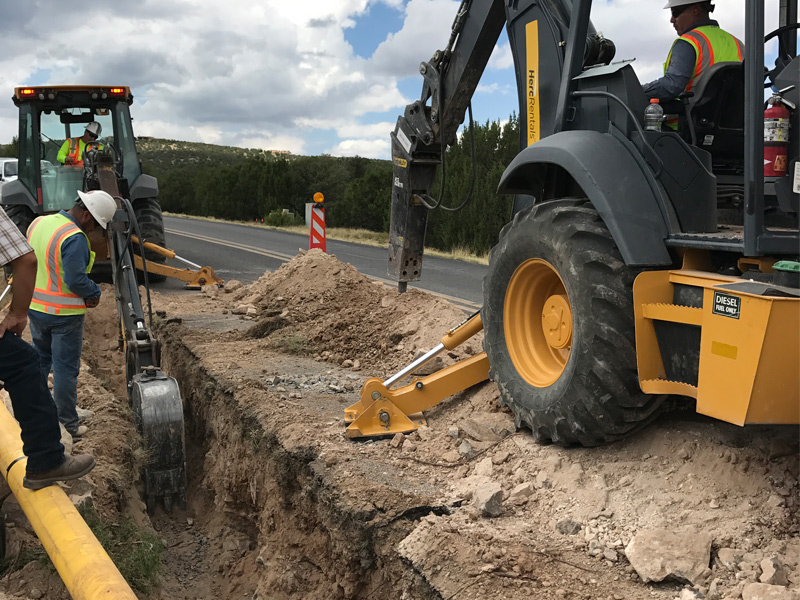
Utility Trenching near Tacoma: Why Summer Is the Best Time
1. Why Homeowners and Builders Need Utility Trenching in the First Place
If you’re reading this, there’s a good chance you’re building, adding on to your home, or finally running utilities to that new shop, ADU, or barn you’ve been planning. That means you’re going to need a trench. Not just a hole — a trench that’s deep enough, straight enough, and safe enough to carry the stuff that keeps your property running: power, water, sewer, gas, fiber internet, or all of the above.
And if you're like most people we talk to near Tacoma or anywhere else in Pierce County, you’re wondering:
How deep does it need to go?
What’s the cost?
Can I do it myself?
When should I get it done?
We get it. It’s a lot. Especially when the ground is hard, permits are confusing, and you’re just trying to stay on schedule.
At TH Excavation, we do this kind of work every week, all over Pierce, Mason, and Thurston Counties — and we’re going to walk you through what you need to know before you dig, why July and August are prime time, and what could go wrong if you wait too long.

2. What Makes Summer the Best Time to Schedule Trenching in Pierce County
Here’s the truth: Summer is trenching season in Washington.
Especially in areas like Tacoma, Gig Harbor, and Puyallup, where rain is a regular guest nine months out of the year. Once July hits, the ground firms up, the grass dries out, and we’ve got the dry window needed to get in, dig fast, and get out without turning your yard into a muddy mess.
Here’s why trenching in summer is just easier:
Dry soil is easier to work with — Our machines run smoother, and cleanup is cleaner.
Fewer weather delays — No rain-outs or mud holes stalling your project.
Inspectors and locate crews are more available — Permits and scheduling move quicker in July/August than they will by October.
You beat the rush — Everyone scrambles for trenching once fall hits. Crews get booked fast.
If you’re planning utility trenching now, this is your window.
3. The Risks of Waiting Until Fall: Delays, Costs, and Waterlogged Ground
Waiting sounds easy until you’re stuck with a soaked trench and a frozen timeline.
We’ve seen what happens when folks try to push trenching into October or November. It’s not pretty — especially if the work involves electrical or foundation coordination.
Here’s what happens when you delay:
Soil becomes saturated: Trenching in wet ground isn’t just messy — it’s unstable. Walls collapse, and you may need shoring or re-digging.
Permit offices slow down: County offices get backed up. That "two-day" permit turns into two weeks.
Frozen mornings: By late fall, frost sets in and slows everything down.
Costs go up: Wet ground takes longer to trench, haul, and repair. That adds hours — and dollars.
If you’re trying to keep a build on schedule or close out a project before winter, it’s better to get on the calendar before September sneaks up.
4. What to Expect When You Schedule Utility Trenching Near Tacoma
You don’t need to know everything — that’s our job — but here’s a quick look at what the process looks like when we handle your trenching project:
Site visit or plan review: We look at your site in person or go over your drawings to understand layout, depth, and access.
Call for utility locates: We handle the 811 call to mark any existing underground utilities.
Permits if needed: Depending on the location and depth, some trenches require county or city permits. We’ll help guide you through this.
Trenching day: We show up with the right machine (mini ex, skid steer, etc.) and get it done efficiently and safely.
Bedding & backfill: For water or sewer, we’ll lay in sand or gravel bedding, install pipe or conduit, and backfill once inspected.
Final grading: We don’t leave a mess. We restore the surface so it looks good when we leave.
Every site is different — but the process is something we’ve done hundreds of times.
5. DIY vs. Professional Trenching: What Really Saves You Time and Money?
We get it — renting a trencher from the local hardware store sounds cheaper. And for some short, shallow runs (like low-voltage lines for landscape lighting), maybe it is.
But here’s what most people don’t factor in:
Rental equipment doesn’t dig through rocky soil easily
Depth matters: Gas and power lines often require 18" to 36" of depth. That's hard work without an excavator.
Slopes and drainage: Improper grading causes pooling, freezing, or settling.
Code requirements: If it’s not built to code, you could get fined or be forced to redo it.
Time: What takes a professional crew half a day could take you all weekend — and still go sideways.
The truth is, by the time you rent equipment, buy bedding material, and spend your weekend sweating over it, you could’ve had it done professionally — probably cleaner, faster, and at a comparable price.
6. How We Customize Trenching Services to Fit Your Property and Budget
At TH Excavation, we don’t believe in a one-size-fits-all approach. Every property in Pierce County has its quirks steep driveways, big rocks, utility conflicts, old trees. We’ve seen it all.
That’s why we always start with the right questions:
What kind of line are you installing? (Water, sewer, electric, fiber, propane)
How deep does it need to be?
How long is the run?
Can we access it with equipment, or is it tight?
Then we build a trenching plan around your goals, your layout, and your timeline. Whether it’s a new build in Bonney Lake or a backyard ADU in University Place, we adapt the trench to fit your project, not the other way around.
We also work closely with general contractors, electricians, and plumbers to make sure everything lines up. No guessing. No wasted trips.
7. Real Problems We've Solved for Pierce County Homeowners
We’ve worked on trenches where…
A homeowner needed to connect a detached garage to water and power but had a concrete driveway in the way. We coordinated a precise trench around the slab without disturbing it.
A builder in Tacoma needed multiple utility trenches run in a narrow setback between two homes — we staged the job to hit code and avoid disrupting the neighbor’s fence.
A trench collapsed after a heavy rain in Puyallup. We came in, stabilized the trench, reinstalled the conduit, and backfilled it the right way.
These aren't horror stories — just real-life examples of how trenching isn't as straightforward as it seems. When you’ve got a team that’s done it all, it makes a huge difference.
8. What to Do Next: Steps to Take Before You Dig
If you’re still in the planning phase, here’s what we recommend:
Get your plans in order – Know where the utilities need to run.
Call early – Don’t wait until your electrician or plumber says “We’re ready.” Trenching schedules fill up fast in summer.
Book a site visit – We’ll walk the property with you, talk through options, and give you a clear quote.
Allow time for permits and locates – Even if we handle this, it still takes a few days.
Get on the calendar – Especially in July and August, days fill up fast.
The earlier you book, the better chance we have to beat the rain and keep your project moving forward.
Final Thought
We’re not here to scare you. We just know that Washington’s weather doesn’t wait, and trenching is one of those things that can make or break a project timeline.
At TH Excavation, we care about making sure the job is done right, done safely, and done when you need it — especially before the skies open up again in September.
If you’re planning any kind of utility trenching this summer near Tacoma or anywhere in Pierce County, give us a call. We’re happy to take a look and help you plan it out, even if you're not ready to dig just yet.
Let’s make sure your utilities are in the ground before the rain makes it harder than it needs to be.

